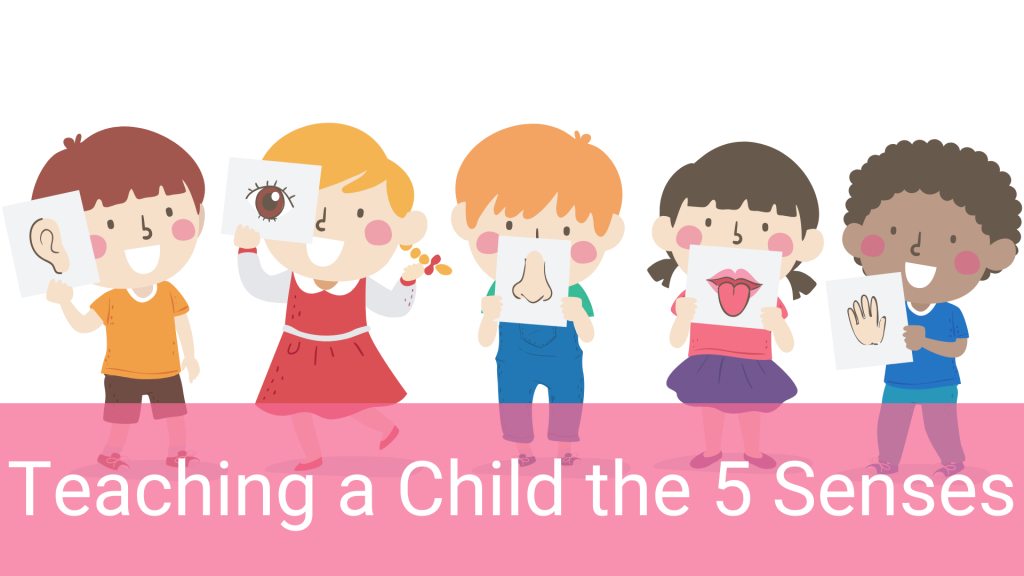In this article:
Introduction
As parents, we have the remarkable opportunity to guide our children’s exploration of the world around them. Understanding the five senses—sight, hearing, taste, smell, and touch—is a fundamental aspect of a child’s early education. Teaching your child about the five senses not only enhances their understanding of the world but also fosters curiosity, observation skills, and a deeper connection to their environment. In this comprehensive guide, we’ll explore effective strategies and activities to help you teach your child about the five senses, empowering them to become better learners and more engaged explorers of the world.
The Importance of Teaching the Five Senses
Before diving into teaching methods, let’s understand why introducing the five senses to your child is crucial:
- Foundation for Learning: Understanding the five senses is a foundational step in developing a child’s cognitive and observational abilities.
- Enhanced Learning: Teaching the five senses enhances a child’s ability to learn and comprehend various subjects, from science and biology to art and literature.
- Connection to the World: Learning about the five senses allows children to form a deeper connection to their surroundings and encourages them to ask questions about the world around them.
Introducing the Five Senses
To begin teaching your child about the five senses, it’s essential to introduce each sense individually:
- Sight (Vision): Explain that sight is the sense of seeing things with our eyes. Encourage your child to observe their surroundings, look at pictures, and notice colors and shapes.
- Hearing (Audition): Teach your child that hearing is the sense of listening with our ears. Encourage them to listen to different sounds, from birds singing to music playing.
- Taste (Gustation): Explain that taste is the sense of detecting flavors with our tongues. Let your child try various foods and describe the flavors they experience.
- Smell (Olfaction): Discuss how smell is the sense of detecting scents with our noses. Encourage your child to smell different objects, such as flowers, fruits, and spices.
- Touch (Tactile): Teach your child that touch is the sense of feeling with our skin. Explore different textures, like soft blankets, rough sandpaper, and smooth stones.
Engaging Activities for Each Sense
Now that your child has been introduced to the five senses, let’s explore activities that help them further understand and appreciate each sense:
- Sight Activities:
- Nature Walks: Go on nature walks and ask your child to describe what they see, from colorful flowers to unique rock formations.
- Shape Hunts: Look for shapes in your surroundings and ask your child to point out circles, triangles, and squares.
- Picture Books: Read picture books together and discuss the illustrations, asking your child what they observe in the images.
- Hearing Activities:
- Sound Guessing Game: Play a sound guessing game where you make different noises, and your child has to identify them with their eyes closed.
- Musical Exploration: Introduce your child to various musical instruments and let them explore the sounds they can create.
- Nature Sounds: Take your child outdoors and listen to the sounds of birds, wind, and water.
- Taste Activities:
- Taste Test: Conduct a taste test with various foods like sweet, sour, salty, and bitter items. Encourage your child to describe the flavors.
- Cooking Together: Involve your child in cooking or baking, allowing them to taste different ingredients as you prepare meals.
- Blindfolded Tasting: Blindfold your child and have them guess what they’re tasting based on flavor alone.
- Smell Activities:
- Scented Scavenger Hunt: Create a scented scavenger hunt by hiding scented items around the house for your child to find using only their sense of smell.
- Aromatic Herbs: Plant aromatic herbs like mint, basil, or lavender in your garden and ask your child to identify the scents.
- Scented Art: Incorporate scented markers or paints into art projects, allowing your child to associate scents with colors.
- Touch Activities:
- Texture Exploration: Provide a variety of textured objects, such as soft fabrics, rough sandpaper, and squishy playdough, for your child to explore.
- Sensory Bins: Create sensory bins filled with materials like rice, beans, or water beads, where your child can use their hands to discover different sensations.
- Texture Walk: Go for a texture walk in your neighborhood, and encourage your child to touch different surfaces like tree bark, grass, and concrete.
Encourage Observation and Questions
Foster your child’s natural curiosity by encouraging them to observe and ask questions about their experiences with the five senses:
- Ask Open-Ended Questions: Instead of providing answers, ask open-ended questions like “What do you notice?” or “What does it feel like?” to stimulate their critical thinking.
- Record Observations: Keep a simple journal with your child where they can record their observations about the world using their senses. This practice encourages them to reflect on their experiences.
- Explore Together: Engage in activities that allow both you and your child to explore the senses together, creating opportunities for bonding and shared discoveries.
Science Experiments and Projects
For older children, consider science experiments and projects that delve deeper into the five senses:
- Sight: Build a simple pinhole camera to explore how light and vision work.
- Hearing: Investigate how different materials can affect sound transmission by experimenting with items like strings and cups.
- Taste: Explore taste buds and how they detect flavors by conducting experiments with various taste sensations, such as sweet, salty, sour, and bitter.
- Smell: Investigate how different scents affect mood and memory by conducting aroma experiments.
- Touch: Explore tactile illusions and sensory perception by experimenting with textures and optical illusions.
Encourage a Sensory-Rich Environment
Create a sensory-rich environment at home to nurture your child’s sensory development:
- Exploration Stations: Set up exploration stations with sensory materials like water, sand, or playdough for your child to engage with.
- Art and Creativity: Encourage your child to express themselves through art and creativity, using various textures and materials.
- Nature Exploration: Spend time in nature, where your child can experience the natural world using all five senses.
- Cooking Together: Involve your child in cooking and baking, allowing them to experience the smells, textures, and tastes of different ingredients.
Teaching Safety and Responsibility
As your child explores the five senses, it’s crucial to teach them about safety and responsibility:
- Safety Precautions: Discuss safety rules, such as not touching hot objects, not tasting unknown substances, and being cautious around loud sounds.
- Respect for Others: Teach your child to be mindful of others when exploring their senses, especially in public spaces.
Celebrate and Reflect
Take time to celebrate your child’s discoveries and reflect on their sensory experiences:
- Celebration: Celebrate their observations and discoveries with simple rewards, praise, or special outings related to their sensory interests.
- Reflection: Encourage your child to reflect on their sensory experiences by asking questions like “What did you learn today?” or “What was your favorite part?”
Encourage Further Learning
If your child shows a particular interest in the five senses, consider exploring more advanced topics in sensory science, biology, or psychology. Visit museums, science centers, or libraries to support their continued learning.
Conclusion
Teaching your child about the five senses is not only educational but also a delightful journey of exploration and discovery. By introducing each sense individually, engaging in sensory activities, encouraging observation and questions, and creating a sensory-rich environment, you empower your child to become better learners and more inquisitive explorers of the world. Nurturing their understanding of the five senses lays a strong foundation for lifelong curiosity and a deeper connection to the incredible world around them.




